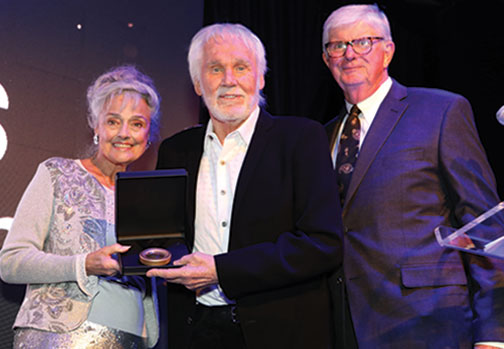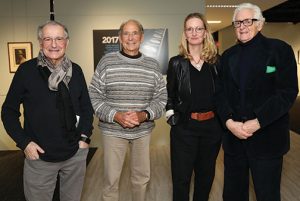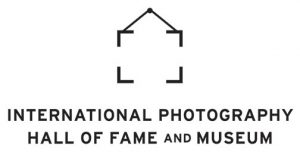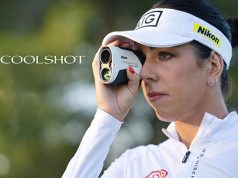
St. Louis, MO—The International Photography Hall of Fame and Museum (IPHF) honored its 2017 Photography Hall of Fame inductees as well as the first-ever Lifetime Achievement Award recipient. Kenny Rogers, singer, songwriter, record producer, actor, photographer and author, received the inaugural IPHF Lifetime Achievement Award. The induction ceremony was held late November at .ZACK in the Grand Center Arts District of St. Louis.
The IPHF annually awards and inducts notable photographers or photography industry visionaries for their artistry, innovation as well as significant contributions to the art and science of photography. This year, nine photographers or photography industry visionaries who demonstrate the artistry, passion and revolution of the past and present craft of photography were inducted. This year’s IPHF class includes:
- Harry Benson, iconic portrait photographer
- Ernest H. Brooks II, black-and-white underwater photographer
- Edward Curtis, photographer of the American West and the North American Indian
- William Eggleston, pioneer of color photography
- Anne Geddes, portrait and infant photographer
- Ryszard Horowitz, pre-digital special effects photographer
- James Nachtwey, photojournalist and war photographer
- Cindy Sherman, conceptual portrait photographer
- Jerry Uelsmann, photomontage photographer

A nominating committee of IPHF representatives and notable leaders with a passion for preserving and honoring the art of photography selected the inductees. To be eligible, nominees were considered based on the noteworthy contributions they made to the art or science of photography that had a significant impact on the industry and/or history of photography. The inductees, though widely differing in style and practice, are individually seen as significant innovators in their respective fields.
“This year, the IPHF is honored to recognize ten creators who have uniquely revolutionized the modern photography industry,” said Patty Wente, executive director of the IPHF. “Our 2017 awardees are innovators who broke the norm of tradition and conceived their own ways of creatively communicating with the world around them.”
In addition, the IPHF honored the late Ken Whitmire. A former IPHF board member, Whitmire was recognized for his many contributions to the museum and for his commitment to photography.
2017 Lifetime Achievement Award Recipient: Kenny Rogers
Grammy Award-winning country superstar and music icon Kenny Rogers has enjoyed great success during his storied career of nearly six decades. The Country Music Hall of Fame member and pop superstar has endeared music lovers around the globe, selling more than 120 million albums worldwide.
Captivating audiences with his musical storytelling, Rogers discovered his talent for telling a new kind of storytelling: with his camera lens. Establishing himself as a well-respected photographer, Rogers’s diverse career is reflected in his varied photographic portfolio, which contains breathtaking land and cityscapes as well as presidential and celebrity portraiture. In 2014, Rogers received an honorary masters of photography from the Professional Photographers of America. 
2017 Photography Hall of Fame Inductees
Harry Benson
Award-winning Scottish photojournalist Harry Benson began his career on the Hamilton Advertiser and Scottish Daily Sketch. In 1964, Benson traveled to America with the Beatles to document their first U.S. tour. Under contract to LIFE magazine for 30 years, Benson has photographed the last 12 U.S. presidents, marched with Martin Luther King, Jr., visited Michael Jackson at Neverland and photographed the assassination of Senator Robert Kennedy. His work has appeared in countless magazines, including Time, Vanity Fair and Newsweek. Twice named NPPA Photographer of the Year, he was made a CBE by Her Majesty Queen Elizabeth II in 2009 and received the ICP Lifetime Achievement Award in 2017.
Ernest H. Brooks II
Son of the founder of the internationally renowned Brooks Institute of Photography, Ernest H. Brooks II has achieved international acclaim for his underwater photography. He has also been a trailblazer in the development of underwater photographic equipment and technique. His photographic legacy is one that illustrates the changes in our environment. Brooks is a member of the Professional Photographers of America and is one of 40 photographers in the world admitted to the prestigious Camera Craftsmen of America.
Edward Curtis
Edward Curtis (1868-1952) took more than 40,000 photographs across his 30-year career. He is remembered for creating an immense landmark portfolio documenting the history and culture of the North American Indian. Curtis’s career began as the official photographer for the Harriman Alaska Expedition of 1899. Then, on a trip to Montana, Curtis was deeply moved by the Piegan people, which set his career on a path for which he would become widely known.
Financially supported by Theodore Roosevelt and investment banker J.P. Morgan, in 1906 Curtis set out across the American West to photograph dozens of native tribes. By 1930, he had published the last of his 20-volume publication, The North American Indian. In the 1970s, Curtis’s work was rediscovered and he is survived by the legacy of his attempt to create a timeless vision and history of Native American Indian culture.
William Eggleston
With a career spanning nearly six decades, Eggleston is known for a singular pictorial style that captures vernacular subject matter in a vivid, sophisticated color format. In 1976, his work was featured in the first major presentation of color photography at the Museum of Modern Art, New York, in a solo exhibition. The exhibit, Color Photographs by William Eggleston, is heralded as an important moment in the medium’s acceptance within the art-historical canon. Moreover, Eggleston taught at Harvard University, published several books and portfolios, experimented with video production and photographed movie sets to document the making of several films. In 2004, he was honored with two Lifetime Achievement Awards, one from Getty Images and the other from the International Center of Photography.
Anne Geddes
Australian-born photographer Geddes is globally known for capturing the beauty, purity and vulnerability that is the essence of childhood and celebration of new life. In 1992 her first calendar was introduced to great success, resulting in the establishment of the Geddes Philanthropic Trust. The trust is dedicated to raising funds for the prevention of child abuse and neglect. Geddes has been named Global Advocate for the United Nations Foundation’s Shot@Life Initiative. That campaign expands access to lifesaving vaccines for children in developing countries. In addition, she is Ambassador for the March of Dimes. Geddes is a multiple New York Times best-selling author, a Lifetime Achievement Award recipient of the Professional Photographers of America and a patron of the New Zealand Institute of Professional Photographers.
Ryszard Horowitz
Horowitz’s award-winning photographs synthesize art, filmmaking and design. He is considered a pioneer in multi-image special effects photography that predates digital imaging. Most of his work is photocomposed. While it is now assembled digitally, his early compositions were all merged in the darkroom or were based on a single exposure in camera. His early fame was established by creating an entire body of work based on an optical illusion. He reversed the perspective of how the single eye camera sees.
Horowitz was born in Krakow, Poland. As an infant during World War II he and his family were interned in a series of concentration camps. Furthermore, he is one of the youngest known survivors of Auschwitz. Horowitz moved to the U.S. in 1959, where he photographed American Jazz legends. He graduated from Pratt Institute in New York and opened his own photography studio in 1967. In the ensuing five decades, his work has been exhibited and published around the globe. Moreover, he has been awarded every major accolade that can be bestowed on a photographer.
James Nachtwey
Since 1981, Nachtwey has dedicated his career to documenting wars and critical social issues. He is motivated by the belief that public awareness is an essential element in the process of change. Nachtwey also believes that photographs of war can intervene on behalf of peace. He has photographed conflicts from the breakup of Yugoslavia and the Rwandan genocide to the Somalian famine, the civil wars in Central America and the Palestinian-Israeli conflict. Moreover, he photographed the September 11th attack on New York City and the subsequent wars in Afghanistan and Iraq.
In addition, he has dedicated his career to photographing social issues. These include homelessness, drug addiction, poverty, industrial pollution as well as global health issues. Nachtwey has been widely celebrated and honored throughout his career. He received numerous Lifetime Achievement Awards, several Photographer of the Year honors and Robert Capa Gold Medals. In addition, war photographer, a 2001 feature-length documentary about his life was nominated for an Academy Award.
Cindy Sherman
Sherman assumes the roles of photographer, model, makeup artist, hairdresser and also stylist to create her provocative photographs. Playing a myriad of characters for the camera, she invents personas and tableaus that examine the construction of identity, the nature of representation and the artifice of photography. Sherman came to prominence in the late 1970s with a group of artists known as the Pictures Generation. Her 2012 retrospective at the Museum of Modern Art, New York, traveled to the San Francisco Museum of Modern Art, the Walker Art Center in Minneapolis, and also the Dallas Museum of Art. Additionally, her work has been included in five iterations of the Whitney Biennial. It has also been in two Biennales of Sydney and the 1983 Documenta. She is also the recipient of the Praemium Imperiale, an American Academy of Arts and Letters Award, a MacArthur Foundation Fellowship and a Guggenheim Memorial Fellowship.
Jerry Uelsmann
An American photographer and professor, Uelsmann is credited as a leader of photomontage. As a master printer, he is known for producing composite photographs with multiple negatives and detailed darkroom work. He blends various images into complex surrealistic photomontages of landscapes, human subjects and vernacular structures. Uelsmann found an interest in photography at a young age. He later went on to earn degrees from the Rochester Institute of Technology and Indiana University. His work has been exhibited in more than 100 individual shows. Moreover, it is part of the permanent collection of numerous prestigious institutions worldwide.
International Photography Hall of Fame and Museum
The International Photography Hall of Fame and Museum is a nonprofit. Its mission is to celebrate the achievements of the inventors, pioneers and also pivotal artists throughout the history of photography. The IPHF has preserved the art of photography and its contribution to modern civilization since 1965. It is home to more than 6,000 historical cameras and 30,000 images. iphf.org





